In 2022, the Victoria University conducted a survey found that over 80% of respondents, faced some form of abuse in community sports. This survey highlights the necessity of identifying and dismantling these pervasive cultural norms that often normalise harmful behaviours. Sport, requires a safe and abuse-free environment to be maintained by all stakeholders, athletes, coaches, and participants. The prioritisation of abuse prevention in sport has become essential. The prevalence of abuse cases reveals systemic maltreatment of athletes and stakeholders at various levels and across different sports. This highlights the urgent need for comprehensive policies, education, and safeguards to protect all participants of a club.
By doing so, sporting organisations will ensure a high standard of mental wellbeing of all participants, and create strong benchmarks for appropriate ethical standards and safe environments.
In this article, we will discuss the measures that can be implemented within a sporting organisation to reduce the prevalence of abuse.
What is abuse?
There are various common forms of abuse in sport such as:
- Physical abuse, which includes hitting, destroying property, food deprivation, etc.
- Sexual abuse, which includes assault, rape, unwanted touching, sexual jokes, etc.
- Emotional abuse, which includes Intimidation, humiliation, intentional, and repeated embarrassment in public.
- Verbal abuse, which includes repeated insults, body shaming, aggressive yelling, name-calling, etc.
- Financial abuse, which includes forbidding someone from working, restricting access to bank accounts, etc.
Abuse in sport can manifest in various forms. Abuse can occur between any individuals involved, regardless of their roles within the sport. The impact of abuse is profound to all involved in sport. Abusive environments in sport, affect not only the victims and the sporting organisations but also the promotion of safe and inclusive sports. Creating a culture of respect, accountability, and support is essential to protect all participants. It is instrumental to ensure the well-being of everyone involved in the sporting community.
Coaches and authority figures wield immense power. In some cases, they exploit their position to inflict harm on athletes. High-profile cases of abuse, such as the Larry Nassar scandal in USA Gymnastics, has shed light on the systemic failures that allowed such atrocities to occur. Larry Nassar was the team doctor of the USA Gymnastics for over 15 years, and used his high authority position to sexually abuse over 265 women in sport. He was jailed in 2018 for a minimum of 40 years (and maximum of 125 years) for his crimes.
The Larry Nassar scandal has inspired countless athletes to courageously share their own experiences of abuse in sport. Many athletes in Australia have stood up and shared their experiences, such as Natalie Nalesnyik’s revelations about the abuse she faced from her coach in the sport of gymnastics. Natalies story highlights the responsibility of sports organisations to maintain a standard of care for their members. Her revelation emphasises the importance of implementing strict policies and educational initiatives. By establishing comprehensive guidelines and consequences for abusive behaviour, these organisations can foster a safer environment that protects athletes and upholds their rights.
Strategies to prevent abuse in sport
To address the challenges of abuse in sport, a multifaceted approach is necessary. To help increase oversight, it is beneficial for sporting organisations to adopt these practices:
1) Implementation of policies
Policies are crucial for governing sporting organisations. They establish clear acceptable conduct for all participants in sports organisations, and establish processes on how to deal with complaints of abuse. They encompass various topics, including protection from abuse and complaints management. The implementation of policies creates a framework for members to follow clear standards of behavior, be held accountable for their actions, and ensures participants understand the consequences of failing to comply with the policies. Consequently, breaches may be escalated to internal or external tribunals to evaluate specific cases against established policies or laws. By having policies in place, it allows sporting organisations to have clear guidelines for behavioural standards for all participants and clear enforcement processes.
It is important for sporting organisations to establish a clear Code of Conduct. A Code of Conduct is a set of rules, principles and values which participants of a sporting organisation must follow in order for the organisations to create an inclusive environment for all within the sporting communities. Establishing clear Code of Conduct is instrumental for setting standards of expected behavior that all participants in sporting organisations must comply with otherwise they may be prosecuted for a breach of such Codes.
Another potential approach is enforcing a strict zero-tolerance policy. This ensures any participant who breaks a rule or abuses others within sporting organisations will be punished.
This hopefully will protect participants from abuse, and provide a consistent application of processes and penalties for breaches of the Code of Conduct and zero tolerance policy. It is important for sporting organisations to have set policies, as well as communicate them to all members involved.
2) Educational programs on abuse
A sporting organisation with a robust integrity framework can significantly reduce abuse cases by emphasising education as a key prevention strategy. Compulsory training modules for all participants in sporting activities—defined as players, parents and or guardians, trainers, officials, and facilitators—are essential to ensure safety and integrity are upheld in sporting organisations. By introducing training modules, participants will be aware of possible abuse that could occur within a sporting organisation. Such education may be available online, live or on demand or in person. Participants have resources available to them to be able to act when abuse occurs. Ultimately leading to a safer and more inclusive environment.
Moreover, sporting organisations should ensure that all participants are aware of the policies. Here, any new member should be provided with the policies such as the Code of Conduct. Participants should read, ask questions, and sign that they acknowledge the rules set in place. Additionally, any updates on the policies should be distributed to all participants. Essentially, the policies and updates will spread awareness within the sporting organisations and minimise the prevalence of abuse by applying set policies.
In Australia, various government-sponsored initiatives, such as Play by the Rules and programs from Sports Integrity Australia, facilitate access to educational tools and courses. These initiatives provide the resources and education to combat abuse in sport. Additionally, many sporting organisations develop and implement their own internal education programs and training courses to further enhance participant knowledge and compliance. Sporting organisations could also provide their coaches, athletes and parents an annual statement of behavioural standards for all.
Further educational practices could include:
- Raising awareness of abuse through club newsletters.
- Sporting organisations enforcing regular seminars and educational material on abuse, for new members/coaches/stakeholders.
- Providing posters and hand out material, on preventative measures in combating abuse.
- Implementing safeguarding individuals at sporting events.
3) Preventative measures
Many preventative measures can be set in place to reduce retaliation and abuse in sport. Sporting organisations can conduct thorough screening of applicant coaches through processes such as:
- Maintaining regular Working With Children’s Check for each event. This ensures all individuals have the right to work with children and thus, protect the young members in sporting organisations.
- Maintaining disciplinary registers. This would act as a strict screening process to ensure repeat offenders are caught before they can enter a sporting organisation.
- Working with Integrity teams and complaints officers to run background checks within community. This stops recidivists or anyone with criminal backgrounds from entering sporting organisations.
A Member Protection Policy (‘MPP’), is a policy which stipulates standards of behaviour, and sets out the rights of all participants. MPPs aim to eliminate discrimination, bullying and harassment (sexual abuse) and victimization, and spell out investigative processes, mediation options and tribunal processes where members are alleged to breach the MPP. Implementing effective MPP’s, employing integrity staff, and collaborating with government-sponsored integrity departments are crucial for maintaining up-to-date abuse prevention strategies.
Knowing the background of participants and their past history, can lower the rate of perpetrators moving into other sporting organisations.
4) Tackling retribution for reporting abuse
To build trust with members, it is crucial to thoroughly investigate all abuse cases and encourage the reporting of misconduct by creating a supportive environment. Individual’s should feel safe and supported when reporting misconduct within a sporting organisation. Here, whistleblowing is reporting certain types of wrongdoing, and is pivotal in eliminating toxic cultures. By encouraging
individuals to report misconduct, dishonest or illegal activity, sporting organisations allow participants to feel protected within the sport environment. Participants will be able to feel safe to talk to safeguarding officers, or authorities about abusive instances. Strengthening policies to prohibit retaliation against those who report suspected abuse fosters a culture of accountability. Implementing whistleblowing can incentivise reporting, while ensuring anonymity during misconduct investigations helps protect individuals who come forward.
Furthermore, The Australian Securities and Investments Commission (‘ASIC’) state that public companies and large proprietary companies of the Australian Prudential Regulation Authority (‘APRA’) regulated entities must now have a whistleblower policy. Subsequently, if a sporting organisation is an APRA-regulated entity, it must have a whistleblowing policy. Moreover, Consumer Affairs Victoria, provide a complaint handling process, where clubs and associations can make a general complaint. Essentially, these options allow sporting organisations to reduce the prevalence of abuse and toxic environments.
Conclusion
Ultimately, minimising abuse in sport requires a multi-faceted approach that focuses on education, prevention, and accountability. By implementing strategies that adopt screening programs for key personnel and address the root causes of abuse by promoting a culture of respect and fairness, we can create a safer and more inclusive sporting environment for all participants.
To find out more about member protection policies read our article on our SportsLawyer website. At SportsLawyer we are specialists in member protection policies for sporting organisations of all sizes, across all capital cities and regions of Australia. We partner with your club, organisation or association to revie policies or create up-to-date policies that meet your needs. Contact SportsLawyer to discuss where your policies, preventative measures, and educational programs can be improved. Please call (03) 9642 0435 to meet with our award-winning Sports Law team.






